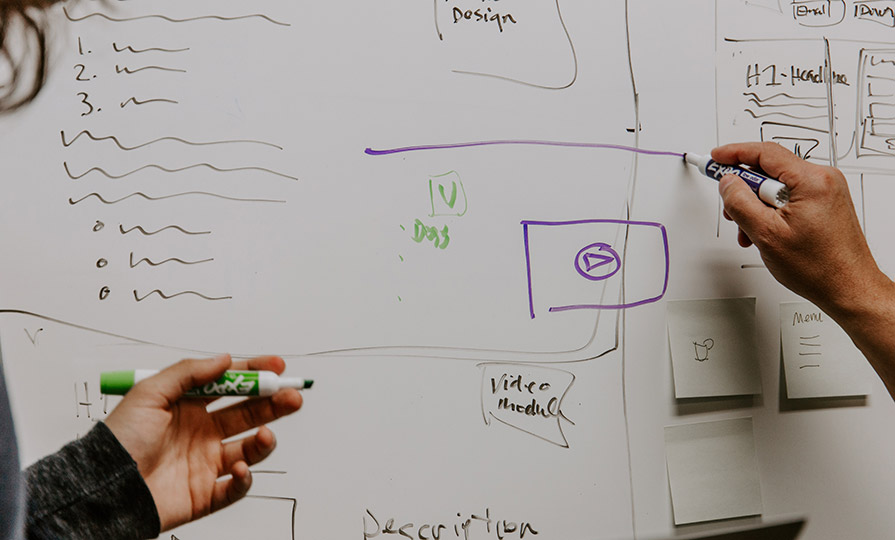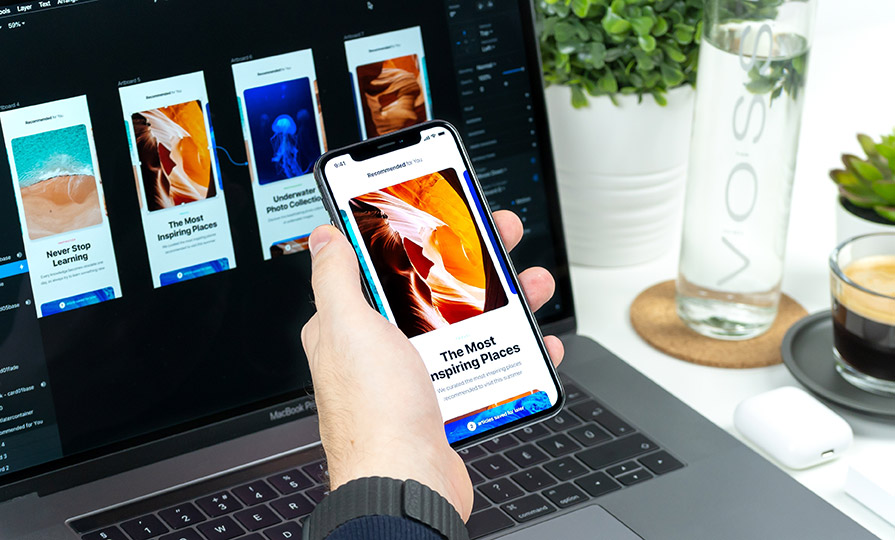It is easy to see why people often confuse UX design and UI design. Both play vital roles in the success of a product or service, but when we look more closely, they refer to very difference parts of the process and disciplines.
So, what are their differences and what is meant by 'good UX' or "poor UI'?
What is UX design
User experience design, also known as UX design, is a term first used by cognitive scientist Don Norman back in the early 1990's. It refers to the experience a user has with a product, company or its service. Good UX places the user at the heart of the design, it focusses on fulfilling their needs and expectations. A UX designer will seek to remove any unnecessary steps or friction the user might encounter when trying to complete their goals. As Steve Krug famously points out "users want to think as little as possible".

For businesses the benefits of embracing UX design can be huge. Users are far more likely to return to a product or service if they have an enjoyable and hassle-free experience. According to the 'Why web performance matters' report 'up to 88% of online users are less likely to return to a website after a bad experience".
It, therefore, shouldn't come to a surprise to find companies like Apple, Facebook and Google investing heavily in UX design. The 'Future of design in start-ups' survey in 2016, found 'the more a business invested in UX, the higher the retention and engagement rates were'. When a company invests in UX design, they save themselves time and money. It is far less expensive to solve avoidable issues and problems at the design stage rather than fix them once a product or website is live.
What is UI design
User interface design, also known as UI design, refers to how a product or service looks and feels. Using visual elements such as typography, colours and icons, UI designers aim to create easy to use and pleasurable experiences. Jesse James Garret, author and founder of Adaptive path, describes UI as 'selecting the right interface elements and arranging them on the screen in a way that we be readily understood'.

With users growing familiar with UI's, they expect them to act in a particular way. UI designers should therefore not overcomplicate their user interface. As Jared Spool explains, 'good design, when done well becomes invisible. It's only when done poorly do we notice it'. Instead, keep UI's simple and predictable. The less noticeable they are, the more users can immerse themselves and concentrate on completing their goals. Ensuring UI elements are consistent us key to make users feel more comfortable.
Do I need both UI and UX design?
As your aware, good UX involves helping users achieve their goals, whilst good UI, allows users complete tasks without any distractions. So, its only when you combine both disciplines together, do you create pleasurable experiences.
As Rahul Varshney, co-creator of Foster.fm puts it 'UX without UI is like a frame of a sculpture without and paper mâché. Whilst UI without UX is like a painter throwing paint on a canvas without any thought'.
Key takeaways
It's easy to see why people confuse UX and UI design. Its true, they share common principles and aim to achieve the same goal. But now matter how often people use the terms interchangeably, its important to remember they refer to different parts of a bigger process and are their own disciplines.